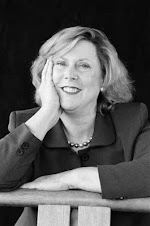What’s a hotelier to do? The answer is to rely on word of mouth, and that, in part, is what this blog is about. If you are anywhere near Muscat, Oman, you MUST go to the Al Bustan Palace and experience their wine and their fabulous food.
 |
| Al Bustan Palace at Twilight, courtesy hotel website |
Normally an American blogger would not have this opportunity, and so I give my thanks to Steven Holt, Marketing Director - Public Relations for the Ritz Carlton Hotels of Northern California. With 2 days to spare at the end of an archaeology adventure in Oman, I emailed Steven: “I understand the Al Bustan is now operated by Ritz. Who do you know?”
Erika Anggreini, public relations manager, made a visit and tasting possible. At a table set a few feet from the lapping waves of the azure waters of the Sea of Oman near the hotel’s Al Khiran Terrace restaurant, the assortment of wines presented by Mark Fagan, Beverage Manager, was simply incredible. “Our wine list changes constantly,” he noted. It takes a while for us to get inventory here, and our clientele like a wide variety of wine experience.” For those who do not consume alcohol, the hotel offers sparkling date juice and other interesting beverages.
This magnificent hotel is set against a majestic backdrop of rugged mountains with and oasis-like feeling amid 200 acres of lush beachfront landscaping. It is justifiably known as one of the world’s most luxurious resorts, with a reputation as the “Jewel of the Sultanate,” and has often hosted
visiting heads of state and members of royalty. This amazing hotel was originally built to host the Gulf Cooperation Council (GCC) Summit in 1985. The hotel is owned by the Ministry of Tourism of the Sultanate of Oman and has been managed by Ritz-Carlton since mid-2011; general manager is Bernard Viola, who has a 20 year career in the hospitality industry.
Our tasting began with the 2010 Villa Maria Sauvignon Blanc, New Zealand, a popular pour at the resort, particularly with EC guests, noted Mark Fagan. Redolent of gooseberry, lime and citrus, it is a relaxed wine perfect for beachfront dining. 13.5% alcohol. The food pairing presented by the culinary team headed by Joergen Sodemann, Executive Chef, was scallops with passionfruit, mushrooms and fennel.
The next wine, which can be found on the hotel’s Bistro wine list is was a Blanc Fume de Pouilly 2005 Dagueneau, from a region 200 miles south of Paris near the Loire valley. Citrus and oak were the predominant taste in this wine, with a touch of pineapple at the side of the palate and a nice minerality. 12.5% alcohol. 200 OMR (Omani Real) the bottle. (At the time of my visit, one OMR was 2.6 American dollars.)
The 2009 Spy Valley Pinot Noir from Marlborough, New Zealand, is yummy with lots of red fruit, coffee, and chocolate flavors, with nice spice and well integrated tannins. 14.5% alcohol. Chef Sodemann paired it with a seared tuna with savory spices, and a mango salsa.
In my opinion, seconded by beverage manager Fagan, the best wine of the evening is an Amarone Classico della Valpolicella, Riserva 2003, Verona. A blend of three types of grapes, usually Corvina, Rondinella, and Molinara, it is sweet and dry. “A King of Red Wines,” proclaimed Fagan. This was an excellent wine for the end of the meal. 16% alcohol.
Ending the evening on a sweet note, we enjoyed the 2010 Sauvion “Chemin des Sables” Rosé d’Anjou from France’s Loire Valley. It’s a blend of Cabernet Franc, Gamay, Pineau d’Aunis (Chenin Noir), and Grolleau. Aroma of peach, cherry and strawberry. Nicely acidic, and semi-sweet. 11% alcohol.
The producer’s website recommends serving this Rosé chilled with Asian foods.
I recommend serving it chilled at the side of the Sea of Oman.
Many thanks to the team at the Al Bustan Palace for hosting what is clearly the most memorable wine event of my life. When I strike oil, I’m coming back.












